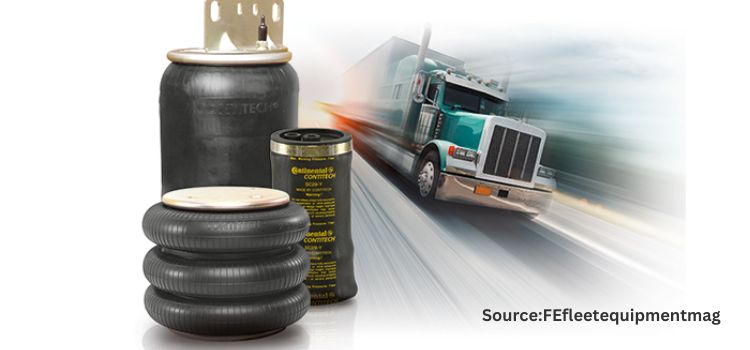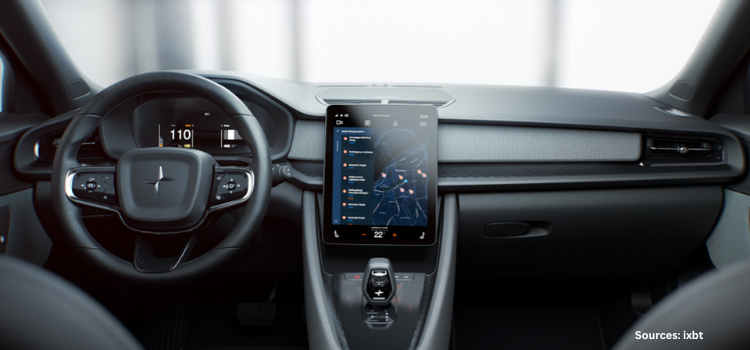
Motor Vehicle Parts Market by Product (Engine Parts, Electrical Parts, Drive & Transmission Steering Parts, Suspension and Braking Parts Equipment, and Other Product), by Vehicle Type (Passenger, Commercial, Sports Vehicles, and Other Vehicle Type), by Type (Interiors and Exteriors, Electronics, Seating, Lighting, and Other Type), and by Distribution Channel (Original Equipment Manufacturer (OEM) and Aftermarket) – Global Opportunity Analysis and Industry Forecast, 2024–2030
US Tariff Impact on Motor Vehicle Parts Market
Trump Tariffs Are Reshaping Global Business
Market Definition
The Motor Vehicle Parts Market size was valued at USD 1305.95 billion in 2023 and is predicted to reach USD 2091.10 billion by 2030, with a CAGR of 7.0% from 2024 to 2030.
The motor vehicle parts industry is a crucial component of the automotive sector, encompassing the design, development, manufacturing, and sale of components used in vehicles. These parts are essential for the maintenance, repair, and enhancement of automobiles, serving as interchangeable elements for dysfunctional sections of a vehicle.
They play a pivotal role in supply chain management and automobile engineering, supporting the continuous upgrading and advanced technology needed to replace fuel-consuming parts with eco-friendly alternatives. The industry's products include a wide range of components such as engines, brakes, fuel lines, and electrical parts, which are used for the repair and maintenance of passenger cars, light trucks, and commercial vehicles. The industry's significance is underscored by its impact on the development of local industries and businesses in regions where major automotive corporations build their assembly lines.
Market Dynamic and Trends
The increasing vehicle manufacturing is driving the demand for the motor vehicle parts market by necessitating a higher volume of components for assembling more vehicles. According to the European Automobile Manufacturers’ Association (ACEA), about 85.4 million motor vehicles were manufactured globally with an increased rate of 5.7% in 2022 as compared with 2021.
Additionally, rising e-commerce plays a pivotal role in supporting online sales allowing automotive retailers and manufacturers to connect with broader customer base. The accessibility, convenience, and personalized marketing offered by online platforms significantly contribute to the increasing sale of motor parts which further expands the growth of the motor vehicle parts market. According to the U.S. Commerce Department, the total online sale of automotive parts increased at 7% in 2022 as compared to the sales in 2021.
Moreover, the expansion of the motor vehicle parts market is being driven by the growing consumer demand for advanced safety and security technologies in vehicles. As consumers prioritize safer driving experiences, they are opting for vehicles equipped with essential components such as airbags, anti-lock brakes, and others. This increase in demand for safety-related motor parts is leading to higher sales, thereby contributing to the overall growth of the motor vehicle parts market.
However, the shift from traditional cars to electric vehicles (EVs) can reduce the demand for traditional vehicle parts as EVs require fewer moving parts, need less maintenance, and their parts last longer which further hinders the growth of the market.
On the contrary, the introduction of autonomous vehicles is fueling a demand for advanced motor vehicle parts, including cutting-edge sensors such as LiDAR, radar, and cameras, as well as powerful computing systems. This further drives the infrastructure improvements and mobility solutions, presenting substantial opportunities growth of the market.
Market Segmentations and Scope of the Study
The motor vehicle parts market is segmented into product, vehicle type, type, distribution channel and region. On the basis of product, the market is classified into engine parts, electrical parts, drive and transmission steering parts, suspension and braking parts equipment and other product. On the basis of vehicle type, the market is classified into passenger, commercial and other vehicle type. On the basis of type, the market is segmented into interiors and exteriors, electronics, seating, lighting, and other type. On the basis of distribution channel, the market is segmented into original equipment manufacturer (OEM) and aftermarket. The regional breakdown includes regions such as North America, Europe, Asia-Pacific, and Rest of world (RoW).
Geographical Analysis
Asia-Pacific region holds the dominant share of the motor vehicle parts market at present due to the global rise in exports and demand for motor vehicle parts driven by the cost-effective manufacturing capabilities of countries such as China, Japan and others attracting both local and global customers due to competitive pricing which fosters market expansion.
According to the International Trade Administration China remains the top global market for vehicles, leading in both annual sales and manufacturing. In 2021, over 26 million vehicles were sold in China, including 21.48 million passenger vehicles with an increase of 7.1% from 2020.
Furthermore, advancements in automotive technology contribute to the development of lightweight and durable materials for vehicle construction. This can include the use of advanced alloys, exhaust systems, and other materials that enhance fuel efficiency and overall performance.
For instance, in February 2022, Akrapovic launched two new exhaust systems for its Yamaha range which is made from high-grade ultra-lightweight titanium. It is the lightest complete exhaust system, weighing just 5.2 kg which is over 50% lighter than the stock system. Thus, making it more precise among the consumers to maintain the overall performance.
On the other hand, North America is expected to show a steady rise of the motor vehicle parts market. This growth is driven by the increasing export of cars and their components, resulting in a substantial demand for replacement parts, components, and accessories, ultimately propelling market growth.
For example, Alliance for Automotive Innovation stated that, the U.S. increased its global presence in the automotive industry, exporting cars and parts worth almost USD 97 billion, a 16% growth in 15 years, reaching 206 countries. This expanded international presence in the automotive industry is fueling the growth of the motor parts market by increasing demand for U.S. automotive components and expertise.
Additionally, the expansion of existing brands by leading motor part manufacturers in the U.S. plays a crucial role in driving the growth of the market. For instance, in August 2023, Stellantis expanded its existing brand, bproauto, for the production of aftermarket car parts.
These parts are cost-effective and suitable for various vehicle brands such as Chrysler, Dodge, Jeep, Ram, and Fiat. These brand extensions enable companies to meet diverse customer demands, creating a strong and dynamic market that contributes to overall market expansion.
Competitive Landscape
Various market players operating in the motor vehicle parts market include Robert Bosch LLC, DENSO, ZF Friedrichshafen AG, Hyundai Mobis, Magna International Inc., Continental AG, AISIN CORPORATION, Valeo, PHINIA Inc., Brembo N. V., SHIH HSIANG AUTO PARTS CO., LTD., Sernauto, SAN Automotive, Aptiv, Lear Corp. and others. These market players continue to adopt various business strategies including, collaboration, product launch, and others to maintain their dominance in the motor vehicle parts market.
For instance, in February 2023, Bajaj Auto and Yulu transportation company collaborated to introduce a range of electric two-wheelers named Miracle GR and DeX GR, tailored for urban mobility and equipped with Yulu's AI-driven technology. Bajaj Auto's production of these vehicles, available in major Indian cities, reflects the growing demand for electric motor vehicle parts in the market, as consumers seek eco-friendly transportation options.
Also, in May 2021, Exide Technologies' launched environmentally-friendly premium battery from recycled materials and incorporating advanced safety features which underscores the manufacturer’s dedication to sustainable manufacturing practices. This initiative reflects the industry's response to the increasing demand for eco-conscious products, contributing to the overall growth of the motor vehicle parts market.
Key Benefits
-
The report provides quantitative analysis and estimations of the motor vehicle parts market from 2024 to 2030, which assists in identifying the prevailing market opportunities.
-
The study comprises a deep-dive analysis of the motor vehicle parts market including the current and future trends to depict prevalent investment pockets in the market.
-
Information related to key drivers, restraints, and opportunities and their impact on the motor vehicle parts market is provided in the report.
-
Competitive analysis of the players, along with their market share is provided in the report.
-
SWOT analysis and Porters Five Forces model is elaborated in the study.
-
Value chain analysis in the market study provides a clear picture of roles of stakeholders.
Key Market Segments
By Product
-
Engine Parts
-
Electrical Parts
-
Drive and Transmission Steering Parts
-
Suspension and Braking Parts Equipment
-
Others Product
By Vehicle Type
-
Passenger
-
Commercial
-
Sports Vehicles
-
Others Vehicle Type
By Type
-
Interiors and Exteriors
-
Electronics
-
Seating
-
Lighting
-
Others Type
By Distribution Channel
-
Original Equipment Manufacturer (OEM)
-
Aftermarket
By Region
-
North America
-
The U.S.
-
Canada
-
Mexico
-
-
Europe
-
The UK
-
Germany
-
France
-
Italy
-
Spain
-
Denmark
-
Netherlands
-
Finland
-
Sweden
-
Norway
-
Russia
-
Rest of Europe
-
-
Asia-Pacific
-
China
-
Japan
-
India
-
South Korea
-
Australia
-
Indonesia
-
Singapore
-
Taiwan
-
Thailand
-
Rest of Asia-Pacific
-
-
RoW
-
Latin America
-
Middle East
-
Africa
-
REPORT SCOPE AND SEGMENTATION:
|
Parameters |
Details |
|
Market Size in 2023 |
USD 1305.95 Billion |
|
Revenue Forecast in 2030 |
USD 2091.10 Billion |
|
Growth Rate |
CAGR of 7.0% from 2024 to 2030 |
|
Analysis Period |
2023–2030 |
|
Base Year Considered |
2023 |
|
Forecast Period |
2024–2030 |
|
Market Size Estimation |
Billion (USD) |
|
Growth Factors |
|
|
Countries Covered |
28 |
|
Companies Profiled |
15 |
|
Market Share |
Available for 10 companies |
|
Customization Scope |
Free customization (equivalent up to 80 working hours of analysts) after purchase. Addition or alteration to country, regional, and segment scope. |
|
Pricing and Purchase Options |
Avail customized purchase options to meet your exact research needs. |
KEY PLAYERS
-
Robert Bosch LLC
-
DENSO
-
ZF Friedrichshafen AG
-
Hyundai Mobis
-
Magna International Inc.
-
Continental AG
-
AISIN CORPORATION
-
Valeo
-
PHINIA Inc.
-
Brembo N. V.
-
SHIH HSIANG AUTO PARTS CO., LTD.
-
Sernauto
-
SAN Automotive
-
Aptiv
-
Lear Corp.

















 Speak to Our Analyst
Speak to Our Analyst





















